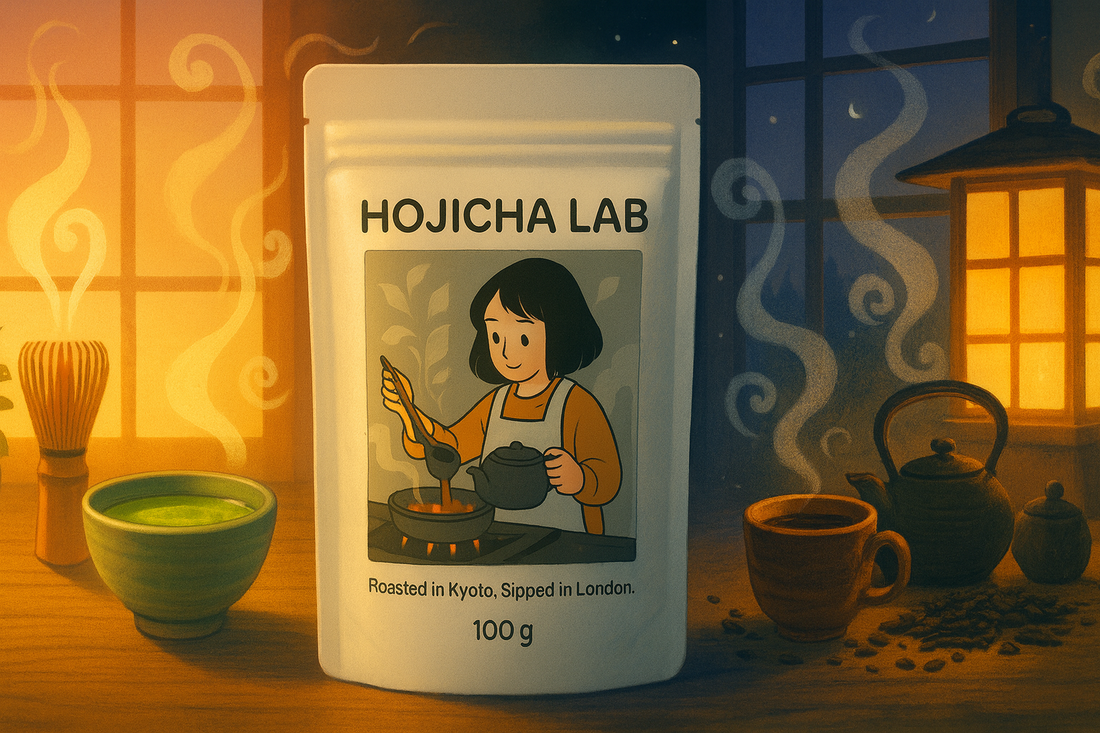
Which Is Better: Hojicha or Matcha? (It Depends on Your Day)
There isn’t a single winner—just the right tea for your mood and moment. Matcha brings bright, grassy energy; hojicha delivers toasty calm. Here’s how to choose, sip by sip.
Matcha: fresh & verdant · Hojicha: toasty caramel
Matcha: higher · Hojicha: low
Matcha: morning/afternoon · Hojicha: afternoon/evening
Use-Cases: Focus Mornings vs Cosy Nights
Morning Focus (Matcha shines)
Whisked matcha is essentially the whole tea leaf ground into a fine powder, so you consume more of the leaf—and more caffeine—than with most brewed teas. It’s popular before work, the gym, or study sessions when you want alertness without the sharp crash of some coffees.
Afternoon Reset (either can work)
For a gentle pick-me-up, lighter matcha or a hojicha latte both land well. If you’re sensitive to caffeine, hojicha’s mellow profile keeps things steady; if you need a touch more lift, go matcha but use a smaller scoop.
Night-Time Unwind (Hojicha wins)
Hojicha is made by roasting green tea leaves or stems. The roast softens bitterness and typically lowers caffeine compared with many green teas. A warm hojicha—straight or as a latte—feels like a fireside drink: cosy, nutty and calming.
Latte Styles & Flavour Preferences
Matcha latte: creamy, bright green, with grassy and umami notes. It pairs beautifully with dairy or neutral plant milks (oat and almond are favourites). Sweeten lightly to keep its fresh character.
Hojicha latte: amber-tan and fragrant, with toasted-nut and caramel hints—almost hot-chocolate vibes, but lighter. Works brilliantly with oat or dairy milk; a drizzle of honey or a pinch of brown sugar complements the roast.
If you love fresh, green, oceanic flavours, you’ll gravitate to matcha. If you crave toasty, cosy, dessert-like flavours, hojicha is your friend.
Decision Flow (quick bullets)
-
Choose Hojicha if…
- You want a low-caffeine drink for late afternoon or evening.
- You prefer toasty, caramel, cocoa-adjacent flavours.
- Lattes, bakes and desserts are your main use-case.
- You’re caffeine-sensitive or alternating with coffee.
-
Choose Matcha if…
- You’re after calm focus for morning or pre-work tasks.
- You enjoy grassy, umami, fresh-green flavours.
- You like vibrant green lattes or straight whisked bowls.
- You don’t mind (or want) a higher caffeine intake.
Hojicha vs Matcha: Side-by-Side
| Criteria | Hojicha | Matcha |
|---|---|---|
| Flavour | Toasty, nutty, gentle caramel; low bitterness | Grassy, umami, bright; can be more intense |
| Colour | Amber to copper (latte is tan) | Vivid green |
| Caffeine (approx. per 240 ml) | ~7–30 mg† | ~55–80 mg (typical 1–2 g serving) |
| Best time of day | Afternoon, evening | Morning, early afternoon |
| Latte profile | Comforting, dessert-adjacent, cocoa hints | Creamy, bright, sweet-green |
| Great for | Wind-down rituals, bakes, iced caramel-style drinks | Pre-work focus, study, pre-workout |
† Caffeine varies by leaf vs stem, roast, ratio and brew time. Hojicha brewed as tea is typically very low; hojicha powder lattes (using 1–2 g powder) sit toward the upper end of the range.
So… which is better?
It truly depends on your day. Many tea lovers keep both on the shelf: matcha for crisp, green focus; hojicha for cosy, low-caffeine comfort. If you’re new to roasted green tea, start with a simple hot brew or an iced hojicha latte—its toasty profile is remarkably versatile.
FAQ
Is hojicha cheaper?
Hojicha is often priced lower than high-grade ceremonial matcha because it typically uses different plant parts (including stems) and a roasting step. Prices vary by origin, grade and whether you’re buying loose leaf or powder, but as a rule of thumb hojicha offers excellent value for everyday lattes and brews.
Is matcha healthier?
Both are forms of green tea with naturally occurring antioxidants as part of a varied diet. With matcha you consume the whole leaf, so you may take in more of certain compounds per serving, along with more caffeine. “Healthier” depends on your goals and tolerance. If you’re caffeine-sensitive, the gentler profile of hojicha may suit you better. This article is for information only and isn’t medical advice.
Can I alternate?
Absolutely. Many people enjoy matcha in the morning for focus and switch to hojicha later for a cosy, low-caffeine cup. Alternating lets you tailor flavour and energy to your routine.
Disclaimer: Caffeine and composition vary with brand, grade and preparation. If you have specific health conditions, seek personal advice.